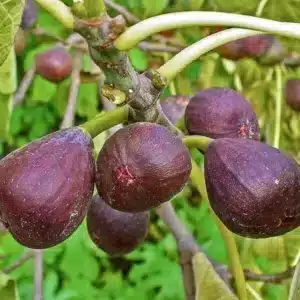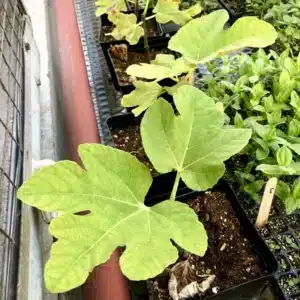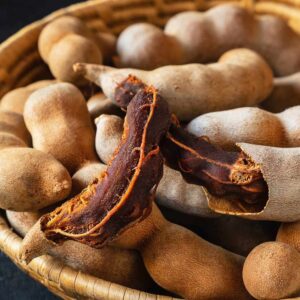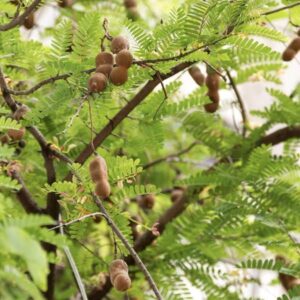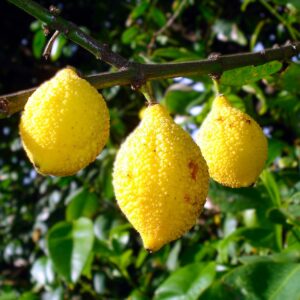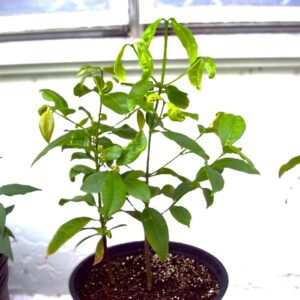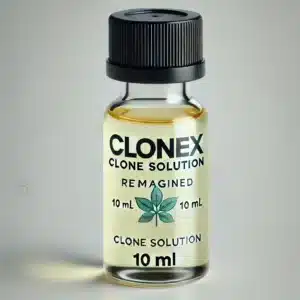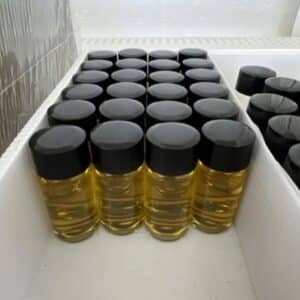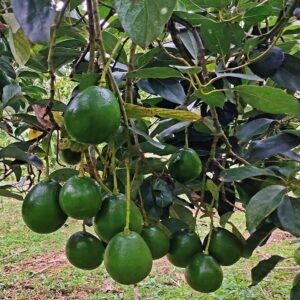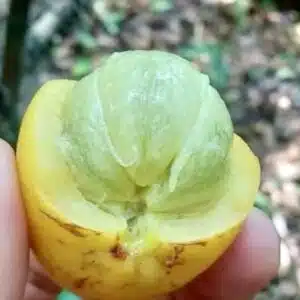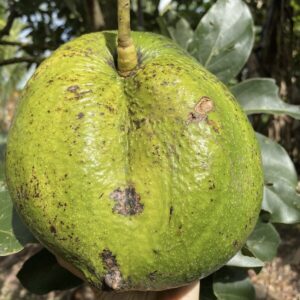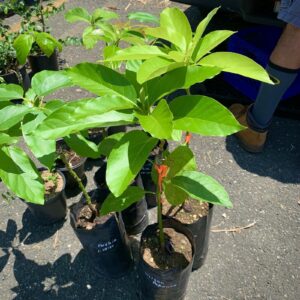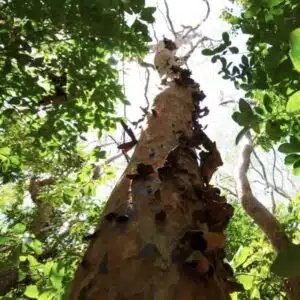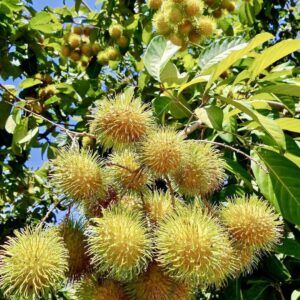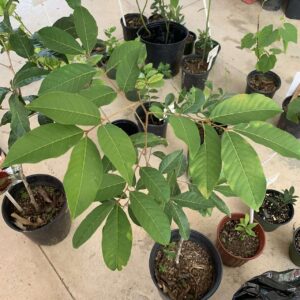Fig ( Ficus carica ) tropical live plant
Step into a world where nature's artistry takes center stage, where each leaf whispers stories of ancient traditions and the passing of generations. The Ficus Fig Tree (*Ficus carica*), a symbol of grace and abundance, invites you to immerse yourself in the timeless beauty of its foliage and the delectable sweetness of its fruits.
Sour Tamarind (tamarindus indica) live fruit tree 1-2 feet tall
Sour Tamarind, scientifically known as Tamarindus indica, is a tropical fruit-bearing tree renowned for its tangy and highly flavorful fruit. The tamarind tree is native to Africa but has been widely cultivated and naturalized in tropical and subtropical regions around the world. Tamarind fruit is used extensively in culinary, medicinal, and even industrial applications due to its sour taste, nutritional benefits, and versatility. The sour variety of tamarind is especially popular for adding acidity and complexity to dishes and drinks.
Sugar apple (Annona squamosa ) big live fruit tree 12”-24”
Savor the Sweetness of Sugar Apple Trees: Nature's Natural Candy Store
Get ready to embark on a delectable journey with the sugar apple tree, now available for online purchase! The sugar apple, scientifically known as Annona squamosa, is a tropical treasure that brings a taste of paradise right to your garden. With its scrumptious fruit, distinctive appearance, and cultural significance, the sugar apple tree is a must-have for any gardening enthusiast.
Clonex Clone Solution 10 ML
Clonex Clone Solution is a specially formulated nutrient-rich liquid designed to support the rooting and growth of new plant cuttings during the cloning process. Manufactured by Growth Technology, Clonex Clone Solution provides essential nutrients, vitamins, and minerals that stimulate rapid root development and help young plants establish themselves more quickly and effectively.
Clonex Clone Solution is often used in conjunction with Clonex Rooting Gel, which is applied directly to the cuttings before planting. While the Rooting Gel provides the initial hormone boost to promote root formation, Clonex Clone Solution is designed to feed the cuttings during the critical early stages of growth, ensuring that the roots develop strong and healthy.
SUPERthrive Vitamin Solution 10 ml Plant Food
SUPERthrive Vitamin Solution is a popular plant supplement used to enhance the growth, health, and vitality of plants. This liquid concentrate contains a mix of vitamins, including Vitamin B1 (thiamine), and hormones that help plants cope with transplant shock, improve root development, and promote overall vigorous growth. While it’s not a fertilizer, it works as a supplement to support plants in addition to regular feeding practices.
SUPERthrive is widely used by home gardeners, landscapers, and farmers for a variety of plants, including trees, shrubs, flowers, vegetables, and houseplants. It is especially helpful during times of plant stress, such as after transplanting, drought, extreme temperatures, or pest attacks. The solution can be applied directly to the soil or used as a foliar spray.
To use, SUPERthrive is diluted in water at the recommended dosage on the product label, usually just a few drops per gallon of water. It's safe for all plants and can be used in conjunction with other fertilizers or growth enhancers.
Grafted Avocado CABRE (Persea americana) tropical live fruit tree 12”-24”
The Grafted Avocado Cabre variety is a sought-after avocado known for its excellent fruit quality, consistent yields, and early production. Grafting ensures that the tree inherits desirable traits from the parent plant, such as superior flavor, size, and disease resistance, making the Cabre avocado a preferred choice for home gardeners and commercial growers alike.
Grafted Avocado marcus (Persea americana) tropical live fruit tree 12”-24”
Marcus Pumpkin Variety Avocado (Persea americana). This unique avocado variety, known for its unusual shape and rich flavor, promises not only a delicious addition to your culinary endeavors but also the satisfaction of nurturing a thriving fruit tree.
Interesting Fact
The Marcus Pumpkin Variety Avocado is not only known for its unique appearance and delicious taste but also for its historical significance. This avocado variety has been cultivated for centuries, with roots tracing back to ancient civilizations in Central and South America. It was highly prized by indigenous cultures for its rich flavor and nutritional value. Today, it continues to be a symbol of tradition and a source of culinary delight, making it a valuable addition to any garden or orchard.
Grafted Yellow Rambután (Nephelium lappaceum) exotic fruit live tree 24”-36”
Golden Rambutan, a rare and sought-after variety, is a prized addition to tropical fruit collections. This distinct cultivar, a variation of the traditional rambutan, is celebrated for its vibrant appearance and unique flavor.
Interesting Fact about Golden Rambutans:
Golden Rambutans are relatively rare compared to their red counterparts. Their unique color and slightly varying taste make them a sought-after delicacy among fruit aficionados. This distinct hue in the rambutan family adds an intriguing and exotic touch to fruit collections and culinary experiences.

